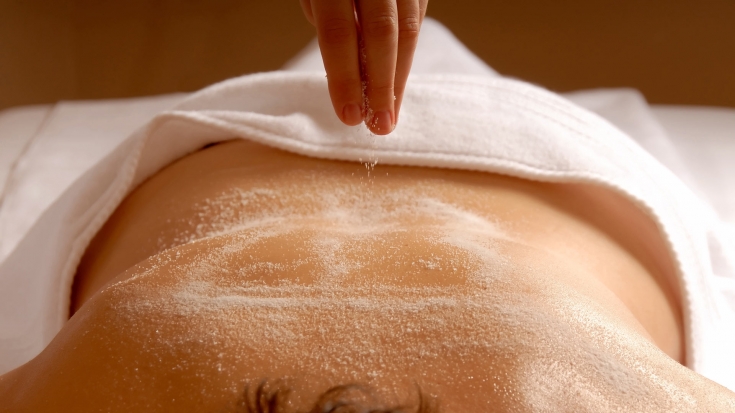When it comes to chemical peels, everyone thinks of a facial treatment that gets rid of flaking, evens out the surface of the skin and softens the appearance of wrinkles. However, chemical peeling can also be successfully used to correct many body skin defects. estet-portal.com reminds that, having correctly selected peeling preparations, a cosmetologist can effectively solve the problems of ingrown hairs, relieve the patient of increased oiliness and porosity of the skin, fight puffiness, dryness, peeling and a small rash on the skin.
What are the features of the body peeling procedure and how to choose preparations for it
Features of body peeling, in comparison with the face, are that the skin is much denser, and the treated surface is quite large. These features must be taken into account in order for the peeling to give the desired results and at the same time not harm the patient.
Body peeling can be performed both to improve the quality of the skin and to correct cosmetic defects.
In the first case, we are talking about increasing the smoothness of the skin and improving its color, reducing the severity of pores. For such peeling, weak preparations are used – superficial alpha hydroxy acid peels such as glycolic, milk, glycolic-salicylic.
• Glycolic acid – accelerates the maturation of inflammatory elements in skin rashes, contributes to the correction of the microrelief.
• Lactic acid – actively moisturizes the skin, stimulates the production of its own hyaluronic acid in the dermis.
• Salicylic acid – useful in the fight against hyperkeratosis, an excellent bactericidal and fungicidal agent.
In another case, when it comes to the corrective abilities of peeling, it should be remembered that with the help of this procedure it is possible to cope with the following defects:
• laxity of the skin on the anterior abdominal wall;
• atony of the skin on the inner surface of the shoulders and thighs;
• follicular keratosis;
• hyperkeratosis on elbows and knees;
• hyperpigmentation;
• stretch marks, scars, post-acne on the back.
Retinoic acid peeling can be one of the remedies that can cope with these problems. This substance stimulates the production of collagen and elastin, can give a very pronounced lifting effect that can compete with a surgical lift. Retinoic peeling perfectly brightens pigmentation, provides biorevitalization of the skin.

Possibilities of body peeling in the correction of follicular hyperkeratosis
Follicular hyperkeratosis is characterized by small, spike-like, flesh-colored or pinkish rashes on the outer surface of the upper arms or thighs. They are formed due to impaired maturation of skin cells that adhere to each other and do not exfoliate by the time of maturation.
The reason for the violation of the keratinization process in follicular hyperkeratosis is usually a lack of retinoids in the body. The use of retinoic peeling will provide a quick therapeutic effect.
Retinoic peeling delivers targeted components directly to the skin. The necessary therapeutic concentration of retinoids is created in the skin already in the first procedure, which gives a tangible result in just one session.
Follicular hyperkeratosis treatment regimen: 4 Jessner or salicylic peels (25%) to prepare the skin; a week later - a course of retinoic peeling of 3-5 procedures, between which a month break is made each time.
Body peeling for correction of stretch marks and cicatricial changes
Jessner peeling, pyruvic (40%) and glycolic (70%) peelings are used to correct stretch marks, scars, skin laxity on the anterior abdominal wall. They promote tissue lifting, activate the synthesis of collagen and elastin, polish cicatricial changes. Penetrating deep into the skin, they stimulate the activity of keratinocytes and the gradual restoration of the epidermis in areas of cicatricial changes. To achieve a noticeable result, you will need a course of 20-30 sessions.
The use of retinoic peeling, which is able to penetrate into the scar tissue and regulate the processes of cell differentiation, will achieve a noticeable effect in 8-10 procedures.
When combining retinoic and phenol peels for the correction of stretch marks and scars, the effect is visible after the first procedure, and stable correction occurs after 3-4 sessions.
Medium phenol peel (25%) softens scar tissue, while retinoic acid stimulates the production of collagen and elastin. Their joint action provides tissue retraction and a lasting lifting effect.









Add a comment